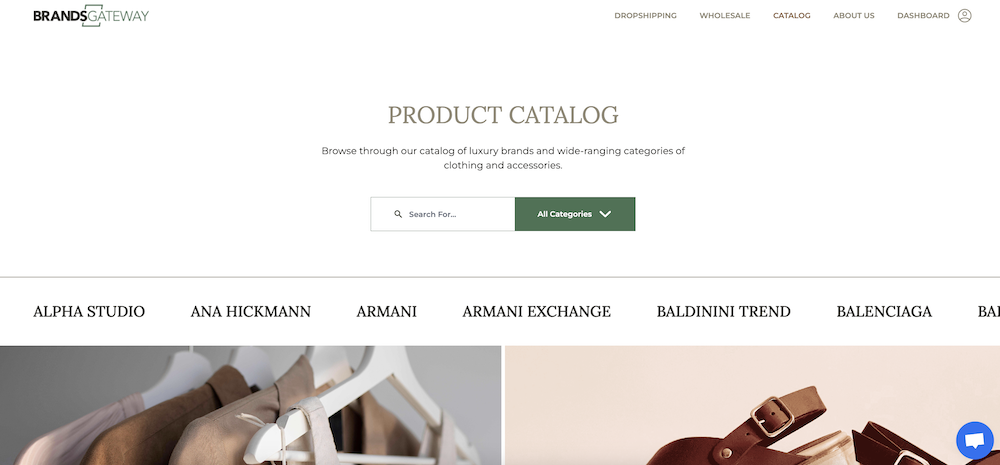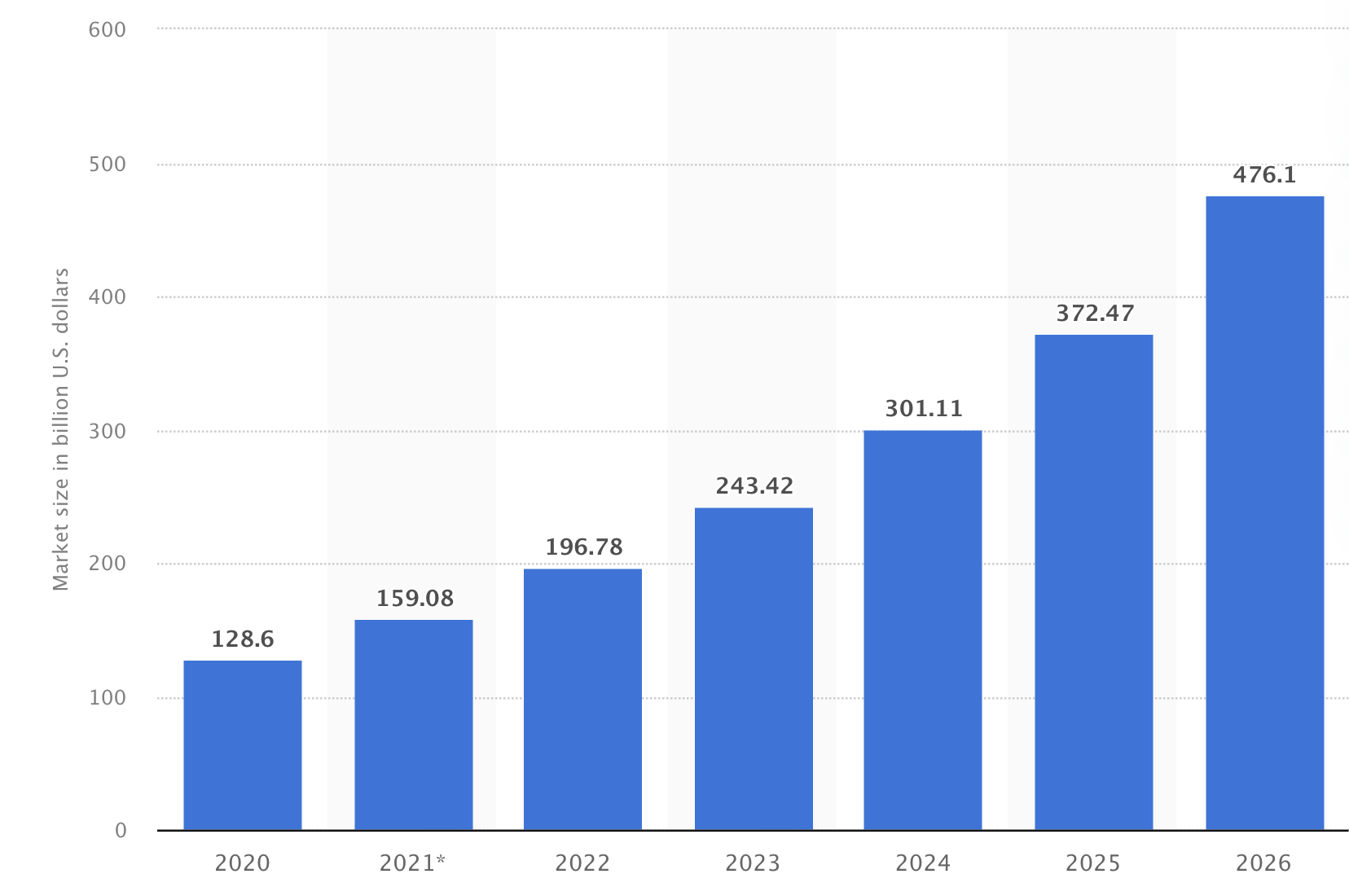Dropshipping vs. Print-on-Demand: Which One is the Better Business Model?
If you're at the crossroads of choosing between dropshipping and print-on-demand (POD) as your go-to business model, you're not alone.
Both models have been making waves in the eCommerce market, offering unique paths to retail success without the hassle of traditional inventory management.
But when it comes down to choosing between dropshipping and print-on-demand, which one takes the crown?
So, stick around as we're diving deep into the heart of both models to help you figure out which route could be your ticket to eCommerce stardom.
Check out: eCommerce vs retail
:format(webp)/https%3A%2F%2Fbrandsgateway.com%2Fapp%2Fuploads%2F2024%2F06%2Fbanner.jpg)
Looking for a reliable dropshipping or wholesale supplier?
Join us today for top-quality products and unbeatable prices.
What is dropshipping?
Dropshipping is a popular business model in the eCommerce market where you, as the retailer, don’t keep a physical inventory. Instead, you sell products provided by third-party suppliers – dropshipping suppliers.
When a customer places an order on your online store, you pass that order along to the supplier who handles all aspects of order fulfillment and ships the product directly to your customer.
What is print-on-demand?
Print-on-demand, often abbreviated as POD, is an eCommerce business model that revolves around designing customized items and getting them manufactured by a supplier who will print out your design onto the products and ship it out to you.
Usually, print-on-demand suppliers allow you to order custom-made products such as mugs, pillows, blankets, phone cases, and apparel.
Print-on-demand can also function as a dropshipping model, where your supplier will not only manufacture your products but also send them directly to your customers whenever they make a purchase on your website.
Dropshipping vs. print-on-demand: main similarities
Let’s explore the main similarities between dropshipping and print-on-demand (POD) as these two business models have a lot in common.
Inventory
Both dropshipping and print-on-demand (POD) share a hands-off approach when it comes to inventory management, which is a huge plus for entrepreneurs who’d rather not spend a fortune on renting warehouses.
They eliminate the need for you to hold any inventory at all. Instead, your supplier keeps the stock and manages all the inventory, saving you from the logistical headache of storage space and inventory tracking.
Order fulfillment
Not only do dropshipping and print-on-demand free you up from managing warehouse logistics, but they also send out all of your customers’ orders for you.
As we might have mentioned already, the order fulfillment method is taken care of by your supplier and can easily be automated: once a customer places an order in your store, you pass the order details to your supplier, who then ships the product directly to your customer.
What’s more, there’s no need to invest in large quantities of stock upfront with either of these business models. You only pay for the products your customers have ordered.
You sell, and they deliver—no pre-purchase necessary.
This setup not only saves you money but also cuts down on the risk of dealing with overstock and frees up your capital and time to focus on scaling your business, marketing, customer service, and, of course, making sales.
Upfront costs
Diving into the financials, dropshipping, and print-on-demand can easily be put into the “let’s not break the bank” business category.
Both business models allow you to launch and scale an eCommerce store, all while maintaining minimal startup costs.
As we’ve discussed before, here’s how dropshipping and print-on-demand come up as much cheaper compared to other business models:
- You don’t rent a warehouse
- You don’t rent a physical location for a store
- You don’t pay for the product until after you’ve sold it.
Scalability
When it comes to scaling your eCommerce business, both dropshipping and print-on-demand stand out for their agility and potential for growth.
Since you’re not bogged down by inventory or shipping logistics, you can quickly scale your store by easily expanding your product range, testing new markets, and ramping up your marketing efforts, to name a few.
With dropshipping, you can add new products to your store at any time and test the waters without the risk of overstocking. With POD, you can easily launch new designs.
This flexibility allows you to respond quickly to shopping trends, customer preferences, or seasonal demands.
Dropshipping vs. print-on-demand: main differences
Market size
If we’re looking at which model gives you a bigger playground, dropshipping takes the lead, hands down.
According to Statista, in the short four-year period between 2020 and 2023, the dropshipping market increased from 128 billion USD to 243 billion USD. Estimations call for an even further growth to 300 billion USD for 2024 and up to 470 billion USD by 2026.
Print-on-demand certainly has its charms too. But when taking into account the market size and the product variety POD provides, dropshipping definitely has the edge.
Researchers at Grand View Research predict that the print-on-demand market has a value of only around 6 billion USD as of 2022.
Check out: Examples of successful dropshipping stores
Product range
As you are already familiar with, print-on-demand focuses on selling customizable products.
While this method allows you to create more unique items, the product options may seem narrower compared to dropshipping as there are a limited number of products on which you can print out a design.
Yes, you can put your cool designs on t-shirts, mugs, and phone cases, but what if the next big thing is designer shoes? That’s where POD can’t follow.
With dropshipping, you have access to a wide range of pre-existing products. This means you can sell items from a huge number of categories without worrying about waiting for inventory to be available.
Dropshipping lets you stock up your store with whatever is trending at the moment.

Profit margins
When we weigh dropshipping against print-on-demand concerning profit margins, dropshipping often provides better profitability.
With dropshipping, you pay your supplier the wholesale price of the products, set up your own retail prices, and pocket the difference. And if you choose the right products, your profit margins can be quite substantial.
For example, products like luxury clothing and accessories are known to earn high-profit margins. This is because, in this type of dropshipping niche, customers are willing to pay more because they know they’ll be getting designer high-quality products.
While print-on-demand does allow you to have complete freedom over the design of your products, it might require more expenses for product manufacturing and a designer, if you’re not capable of doing the designs yourself.
What’s more, when selling products like mugs, t-shirts, and posters, it’s likely that you’ll work with smaller margins.
Shipping times
When it comes to online shopping, shipping times are a big deal. No one likes waiting weeks for their ordered items to arrive.
Shipping times can make or break customer satisfaction and loyalty, and here’s why dropshipping has the advantage again.
With dropshipping, you can partner with suppliers worldwide, including those close to your main customer base. This proximity can lead to faster shipping times. You can offer various shipping options, from economy to expedited, giving customers the choice to pay more for faster delivery if they choose.
On the other side, print-on-demand products might take longer to get shipped off to your customers as they need to be manufactured first. Each item is custom-made upon order, adding production time to the shipping timeline.
Which one is the better option and why?
While both have their own set of advantages, if we take into account product versatility, scalability, and the potential for juicy profit margins, dropshipping goes for the win.
Here’s why.
Dropshipping offers you a wide range of products to sell, meaning you can easily adapt to market trends and shopping preferences.
Moreover, you can scout for the best deals from suppliers around the globe, ensuring you get quality products at prices that let you mark up for a healthy profit.
Plus, the faster shipping times? A game-changer. Being able to promise your customers quick delivery can significantly boost customer satisfaction and loyalty.
In the end, it does come up to the type of business you’ve envisioned for yourself.
Despite dropshipping having the upper hand, print-on-demand can still be a great business model for building a successful eCommerce store.
So, take a look at your priorities, revisit your business plan, or even try out both methods to rule out which one would be better for your business.
FAQ
-
Dropshipping can be more profitable due to its broader product range and potentially higher profit margins.
-
Yes, you can combine dropshipping with print-on-demand.
-
Printify and Printful are among the top print-on-demand platforms.
-
BrandsGateway stands out as one of the best dropshipping suppliers, especially for luxury fashion items. They offer a vast selection of designer brands, competitive profit margins, and support for a variety of eCommerce platforms.
Related articles
Our clients' success stories speak volumes about the impact BrandsGateway has had on their businesses.
View More Articles








:format(webp)/https%3A%2F%2Fbrandsgateway.com%2Fapp%2Fuploads%2F2024%2F07%2FScreenshot_20240618_140550_Gallery.jpg)

:format(webp)/https%3A%2F%2Fbrandsgateway-img.s3.fr-par.scw.cloud%2F4352691.jpg)
:format(webp)/https%3A%2F%2Fbrandsgateway-img.s3.fr-par.scw.cloud%2F1903807.jpg)
:format(webp)/https%3A%2F%2Fbrandsgateway-img.s3.fr-par.scw.cloud%2F6825471.jpeg)
:format(webp)/https%3A%2F%2Fbrandsgateway.com%2Fapp%2Fuploads%2F2025%2F04%2Freview-scaled.jpg)
:format(webp)/https%3A%2F%2Fprod-brandsgateway-images-do.s3.fr-par.scw.cloud%2F2019%2F04%2F6-Best-Men%E2%80%99s-Clothing-to-Sell-in-2019.jpg)
:format(webp)/https%3A%2F%2Fprod-brandsgateway-images.s3.fr-par.scw.cloud%2F2022%2F02%2Finstagram-stories-dropshipping-store-c7eaad24-d54.jpg)
:format(webp)/https%3A%2F%2Fbrandsgateway.com%2Fapp%2Fuploads%2F2025%2F03%2Fstartup-costs-scaled.jpg)
:format(webp)/https%3A%2F%2Fbrandsgateway.com%2Fapp%2Fuploads%2F2025%2F03%2Fgiveaway-scaled.jpg)
:format(webp)/https%3A%2F%2Fbrandsgateway.com%2Fapp%2Fuploads%2F2024%2F06%2Fwindow-display.png)
:format(webp)/https%3A%2F%2Fbrandsgateway.com%2Fapp%2Fuploads%2F2025%2F03%2Fniche-store-scaled.jpg)
:format(webp)/https%3A%2F%2Fbrandsgateway.com%2Fapp%2Fuploads%2F2025%2F03%2Fshopify-chargebacks.jpg)